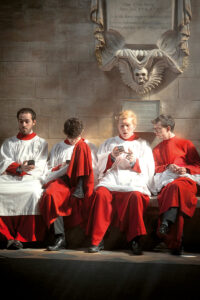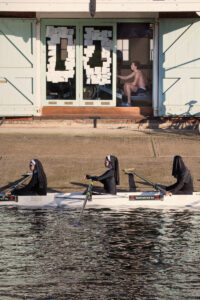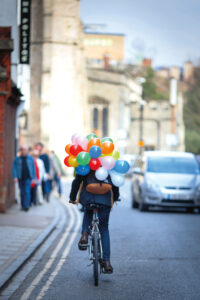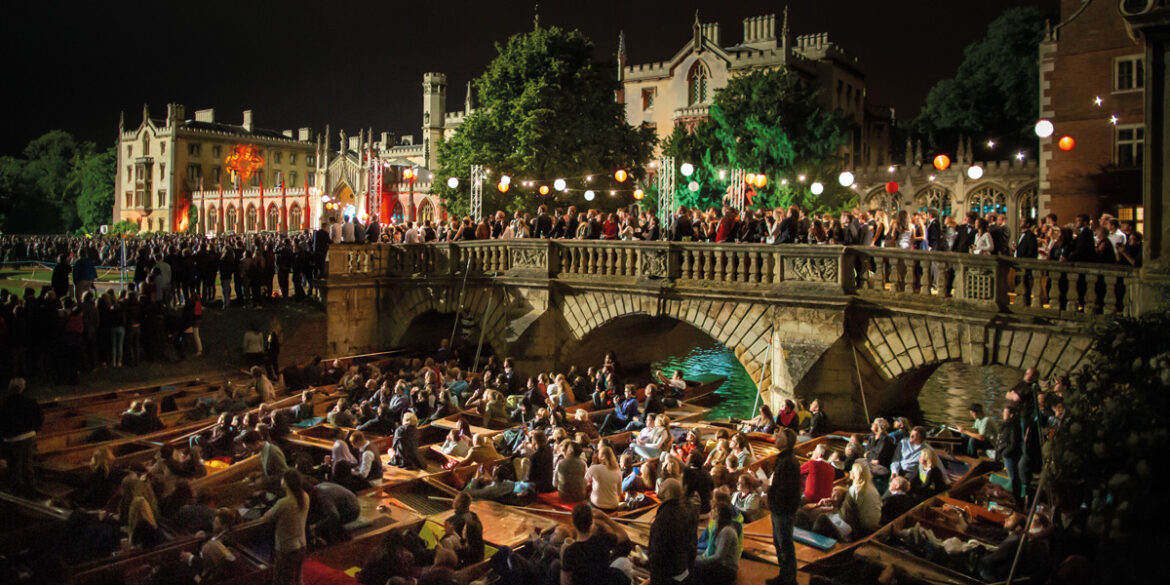Snapshots of a City in Cambridge
After 13 years and 5,000 photographs, Martin Bond reflects on his daily portrait project, A Cambridge Diary, and why it’s time to move on to something new
Alone cyclist makes his way down Silver Street with a cloud of balloons strapped to his back like something out of a Pixar film.
One row of choirboys fight boredom on their smartphones while a skull looms overhead against the scenic backdrop of St John’s College Chapel. .
Three nuns in various degrees of good posture paddle along the Cam, as one’s attention is caught by a male rower mid-workout.
These are some of the rare, fleeting moments captured by local photographer Martin Bond in his vast photo project, A Cambridge Diary, where he took a photograph of the city every day for the past 13 years to capture its evolving charm.
The project began in 2010 when Martin, a ‘jobbing photographer’ who fell into the career by mere chance, was trying out a new camera lens in the old Jessops shop on Green Street.
“Photography found me, rather than the other way round, and I’m extremely grateful that it did,” he enthuses. At the time, the shop’s manager encouraged Martin to take the new lens for a spin on the street outside.
There he noticed a signwriter busy at work, precariously perched on a ladder, balancing his paint in one hand and a brush in the other.
“As I raised my camera to take his picture, the tin of paint fell to the floor all over his rucksack,” he recalls. “The look on his face was priceless and I began to wonder if there was anyone taking the trouble to record those going about their normal business in Cambridge outside of the college walls.”
So Martin embarked on what was originally meant to be a 365-day project, sharing a photo each day on a dedicated Facebook page.
The year soon passed – and although his following remained small, Martin was hooked not just by the creative challenge, but also by developing his photographic skills as he was forced to shoot only in portrait mode.
“I decided I’d keep doing it until I got fed up,” he says. Gradually, the years went by and the following grew, reaching 23k followers on Instagram and a further 52k on X (formerly Twitter) at the time of writing.



CHAPTERS NEW
Ten years seemed a natural point of closure, before Covid-19 struck and Martin knew it would be the wrong time to bring his series of photos – a consistent daily source of beauty, wonder and escapism
in the everyday to so many – to a close. There was still some steam left.
“Over the course of the project, I’ve developed a purpose of trying to look at ordinary things, but find something in that scene which is almost otherworldly. People provide these moments every day, and we miss them all the time.”
Now, Martin has settled on a new ending – picture number 5,000. “It’s been a difficult decision to make, but it’s time to release myself from this self-inflicted discipline!” he shares.
The virtual diary may be coming to a close, but a fresh venture begins with the publication of a series of photo books – thick, hardback coffee table tomes which are a visual celebration of the finest images from Martin’s record of Cambridge.
The first, Cambridge – Town & Gown, contains 365 images from the first seven years, and a further two will follow.
“All that work will eventually disappear into the ether. I wanted to have something physical to show for it. There’s a saying that goes, ‘a photograph doesn’t count until it’s printed’, and I agree with it.”
A SHIFTING CITY
Cambridge born and bred, a ‘town boy’ born in the maternity hospital that once existed on Mill Road, Martin witnessed first-hand the rapid pace of change that has swept through the city in recent decades.
Having known Cambridge in a bygone era, prior to the arrival of endless traffic, relentless congestion and orange-hued clouds of light pollution, the city’s transformation is not an entirely positive one.
“Since I began taking these pictures, Cambridge’s population has grown from 120,000 people to just over 150,000, and that’s just within the confines of the city,” he observes. “We also get upwards of seven million tourists a year. An obvious question is: where do all those people go?”
In the face of massive developments sprouting on the fringes of the city, the scenic historic centre grows ever more exclusive.
The colleges where a young Martin could once wander freely, passing through as shortcuts, are now either closed for a fee or blocked to the public entirely. “It’s sad because so many of us have grown up in this city, yet we are excluded from its biggest part,” he shares.
For Martin, Cambridge today represents an exhausted city, stifled by a suffocating level of congestion caused by exponential growth.
Our conversation, and indeed Martin’s project, draw to a close as a poignant reminder that ours is a strained city that needs space to breathe in the face of an uncertain future.
“Nevertheless, it doesn’t stop me wanting to see the beauty.”

